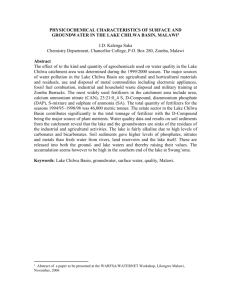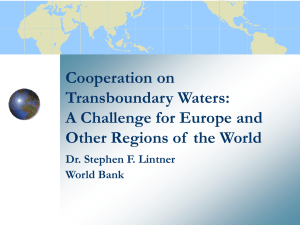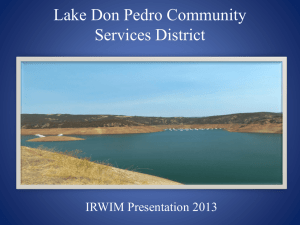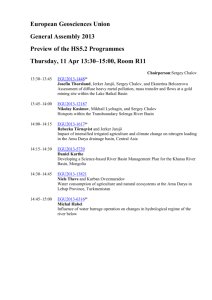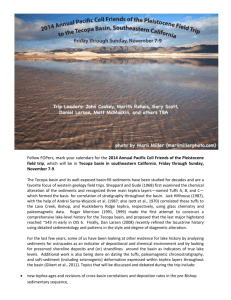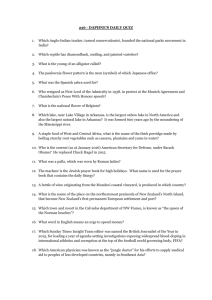docx
advertisement
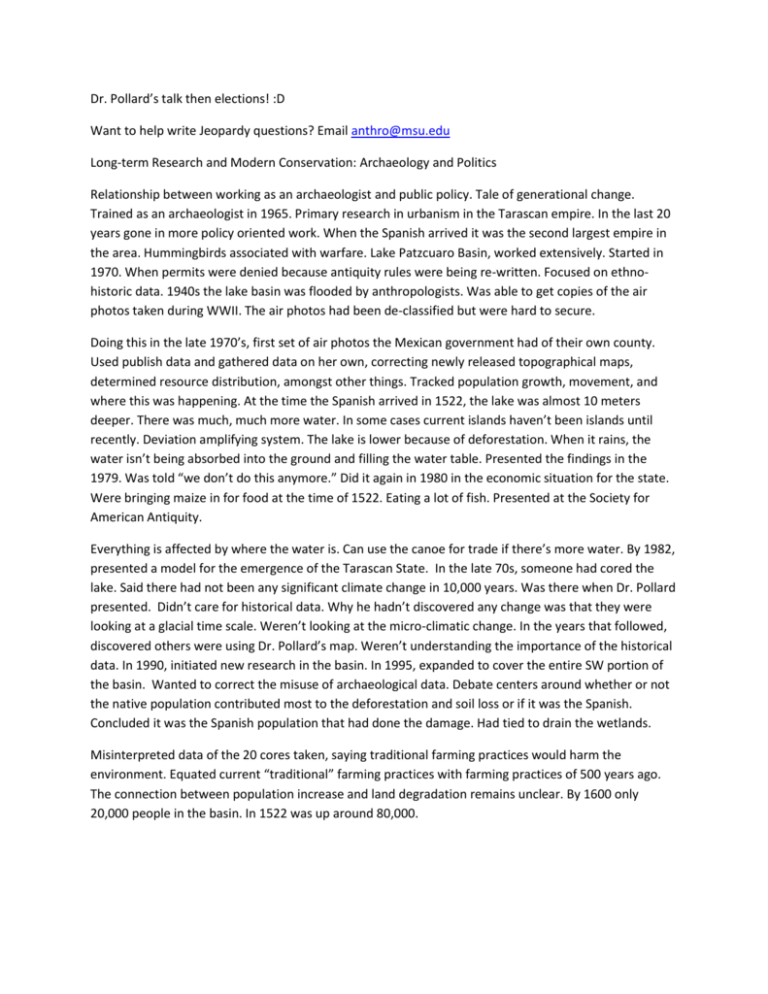
Dr. Pollard’s talk then elections! :D Want to help write Jeopardy questions? Email anthro@msu.edu Long-term Research and Modern Conservation: Archaeology and Politics Relationship between working as an archaeologist and public policy. Tale of generational change. Trained as an archaeologist in 1965. Primary research in urbanism in the Tarascan empire. In the last 20 years gone in more policy oriented work. When the Spanish arrived it was the second largest empire in the area. Hummingbirds associated with warfare. Lake Patzcuaro Basin, worked extensively. Started in 1970. When permits were denied because antiquity rules were being re-written. Focused on ethnohistoric data. 1940s the lake basin was flooded by anthropologists. Was able to get copies of the air photos taken during WWII. The air photos had been de-classified but were hard to secure. Doing this in the late 1970’s, first set of air photos the Mexican government had of their own county. Used publish data and gathered data on her own, correcting newly released topographical maps, determined resource distribution, amongst other things. Tracked population growth, movement, and where this was happening. At the time the Spanish arrived in 1522, the lake was almost 10 meters deeper. There was much, much more water. In some cases current islands haven’t been islands until recently. Deviation amplifying system. The lake is lower because of deforestation. When it rains, the water isn’t being absorbed into the ground and filling the water table. Presented the findings in the 1979. Was told “we don’t do this anymore.” Did it again in 1980 in the economic situation for the state. Were bringing maize in for food at the time of 1522. Eating a lot of fish. Presented at the Society for American Antiquity. Everything is affected by where the water is. Can use the canoe for trade if there’s more water. By 1982, presented a model for the emergence of the Tarascan State. In the late 70s, someone had cored the lake. Said there had not been any significant climate change in 10,000 years. Was there when Dr. Pollard presented. Didn’t care for historical data. Why he hadn’t discovered any change was that they were looking at a glacial time scale. Weren’t looking at the micro-climatic change. In the years that followed, discovered others were using Dr. Pollard’s map. Weren’t understanding the importance of the historical data. In 1990, initiated new research in the basin. In 1995, expanded to cover the entire SW portion of the basin. Wanted to correct the misuse of archaeological data. Debate centers around whether or not the native population contributed most to the deforestation and soil loss or if it was the Spanish. Concluded it was the Spanish population that had done the damage. Had tied to drain the wetlands. Misinterpreted data of the 20 cores taken, saying traditional farming practices would harm the environment. Equated current “traditional” farming practices with farming practices of 500 years ago. The connection between population increase and land degradation remains unclear. By 1600 only 20,000 people in the basin. In 1522 was up around 80,000.
